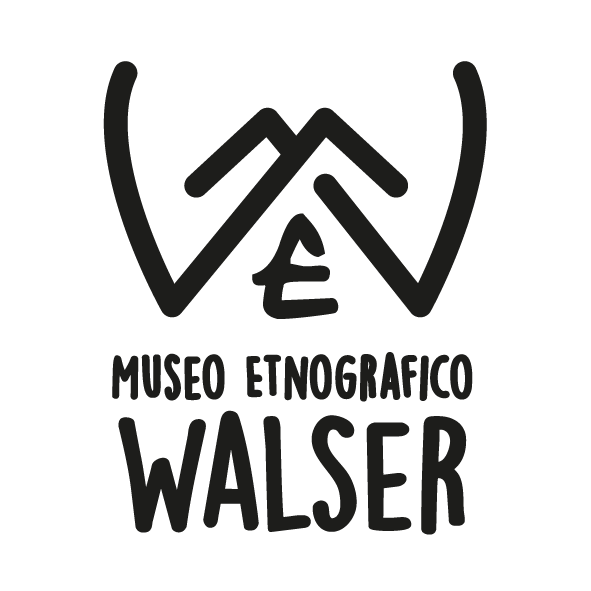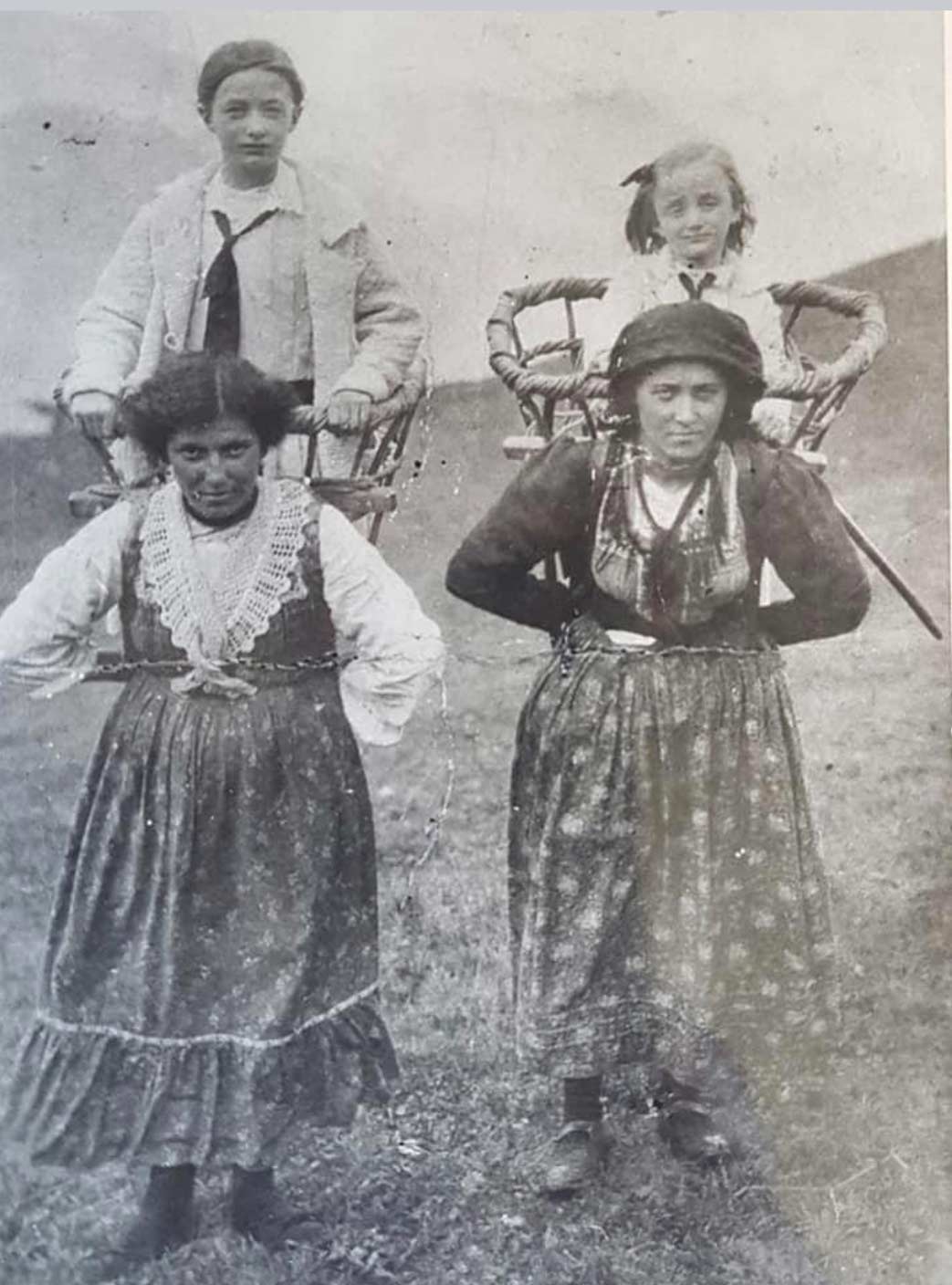The 12th century saw the first migration of Walser (from the word Walliser, referring to someone originating from Valais) people, who thanks to the particularly favourable climate conditions, set out on a long journey from the high plateau of Goms (Swiss Valais) across the alpine passes during an ice-free period, in search of new potential places to settle in the neighbouring highlands. Because of their knowledge of nature and farming in the harshest Alpine environment, the Walsers managed to settle and live permanently on the high slopes never before occupied due to their adverse climate and conditions. In the process, they gathered a profound knowledge of the surrounding nature and developed methods and strategies for extracting all they needed to survive (traditional environmental knowledge), at the same time learning to preserve natural resources and biodiversity for future generations.
THE WALSERS – CULTURAL HERITAGE OF HUMANITY
All the Walser villages (over 150 permanent settlements were created during the following periods, in the Central Alps of Switzerland, Italy, Austria, France and Liechtenstein, covering more than 300 km), were interconnected by a network of paths – even across borders – some which existed already before the permanent houses were built, tracing their most frequented transit routes through the Alps, which had allowed the Walser people to travel and offer their agricultural produce and crafts at markets and fairs, often held in places far away from home.
The favourable incentives offered to the Walser families by the feudal lords and some monastic institutions (The Walser Legislation), certainly contributed to the creation of new communities, thanks to the promise of personal freedom and the right to “hereditary leasehold” of the land, in exchange for an annual fee and military duty in case of war.
In Italy, the Walser settlements are mainly located along the heads of the valleys at the foot of the Monte Rosa massif, characterised by high mountainous territories (from 1000 to 2000 metres altitude).
During several centuries of co-evolution between man, environment and nature, the Walser communities developed a profound knowledge of the alpine ecosystem, and thus managed to protect their territory, thanks to a comprehensive heritage of biocultural knowledge and expertise passed down through the generations.
From the very beginning, the Walsers were also distinguished by their particular way of speaking, a language very reminiscent of Swiss-German in its more old-fashioned form, which still characterises their cultural identity.
With their sophisticated methods and skills in farming the alpine land, the Walsers managed to survive as the first settlers in these harsh territories, clearing forests and rending the steep areas cultivable by building dry stone walls and terraces with an irrigation system and protection from avalanches. They also erected rural buildings (hay lofts, barns, mills, wells, granaries, ovens …), living quarters (buildings with different characteristics depending on the location, but always with the typical use of massive timber logs of lark wood, laid with the old crossways building technique of “blockbau” – securing them “masculine-feminine” – and with a foundation and cellar of stone) and religious buildings (churches, chapels, oratories, crosses erected on high peaks or along the paths).
The Walser communities, isolated in the inhospitable environment of the high alps and extremely conscious of the necessary relationship between the environmental climatic factors and the sustainability of their cultural and social model, were self-sufficient and decentralised in small scattered hamlets (a sustainability model known as “scarce and scattered”), interconnected by a network of paths: the families shared the oven, mill and well.
Thanks to their advanced knowledge of agriculture in high mountains, they managed to grow sufficient crops (rye, barley and hemp) at over 1,700 m altitude, and to develop methods of gathering and storing enough feed for the animals (cows and goats) to produce milk, butter and cheese) during the long winter months when they could not be put out to pasture, thus implementing a model characterised by a mixed economic system known as “Alpwirtschaft” (based on raising of livestock and farming in extreme conditions).
During these months, when agricultural and pastoral work was limited due to the harsh weather, they primarily worked on making tools for use in turning milk into butter and cheese; cultivating the fields; pastoral, forging and textile tasks, as well as construction. These objects were often decorated with religious symbols and “segni di casato” – the house sign of the family to whom the particular objects belonged.
The historic and cultural connotation of the Walser community has contextually allowed for the preservation of distinctive clothes and costumes for each village, which today still represent specific identities for the various groups within the Walser community, such as the use and style for each village, characterised by distinctive features showing the place of origin and the social status of the person wearing it (e.g. single girls, married women).
However, from the 19th century and onwards, the Walser villages, mostly located in the Alpine territories, have seen a continuous depopulation. This phenomenon initially consisted of seasonal emigration by the men, in search of an extra source of income to the domestic ones, such as farming and livestock (even after the changed climatic conditions – the Little Ice Age – which reduced the graze land at high altitude as well as the crops), and continued to increase with the new industrial and urban culture. Despite the adverse impact of these events on the Walser communities, they have always strived – often in a non-formal and unwritten manner for an intergenerational transmission of maintaining and passing on the memory of the significant cultural heritage that their alpine highlands were filled with, and to safeguard the remains of their traditions, skills, customs, habits and linguistic expressions. In recent decades, the complex system of biocultural diversity that was developed during centuries of Walter communities, including aspects of nature, territories, cultural history and language, has been subject to a decline of fast accelerating pace. In an alarming way, this loss of an important cultural heritage occurs alongside numerous other socio-economic and environmental changes, that are no longer sustainable. Safeguarding of the skills and knowledge developed by the ancient alpine populations, may even become a means for better understanding of other phenomena and promote ways of transformation towards a more sustainable development in the future. Today, the programme for safeguarding and transmission of the Walser cultural heritage is in the hands of associations, individuals and groups on a local, national and international level, dedicated to keeping the many aspects of the Walser cultural heritage alive. Building on their network across different territories, the communities work with shared objectives and also try to involve those groups from the most remote areas, which are closest to nature, and thus at risk of losing their biocultural patrimony due to the rapid anthropization of these areas.
Category
Village of Rabernardo, Val Vogna















































